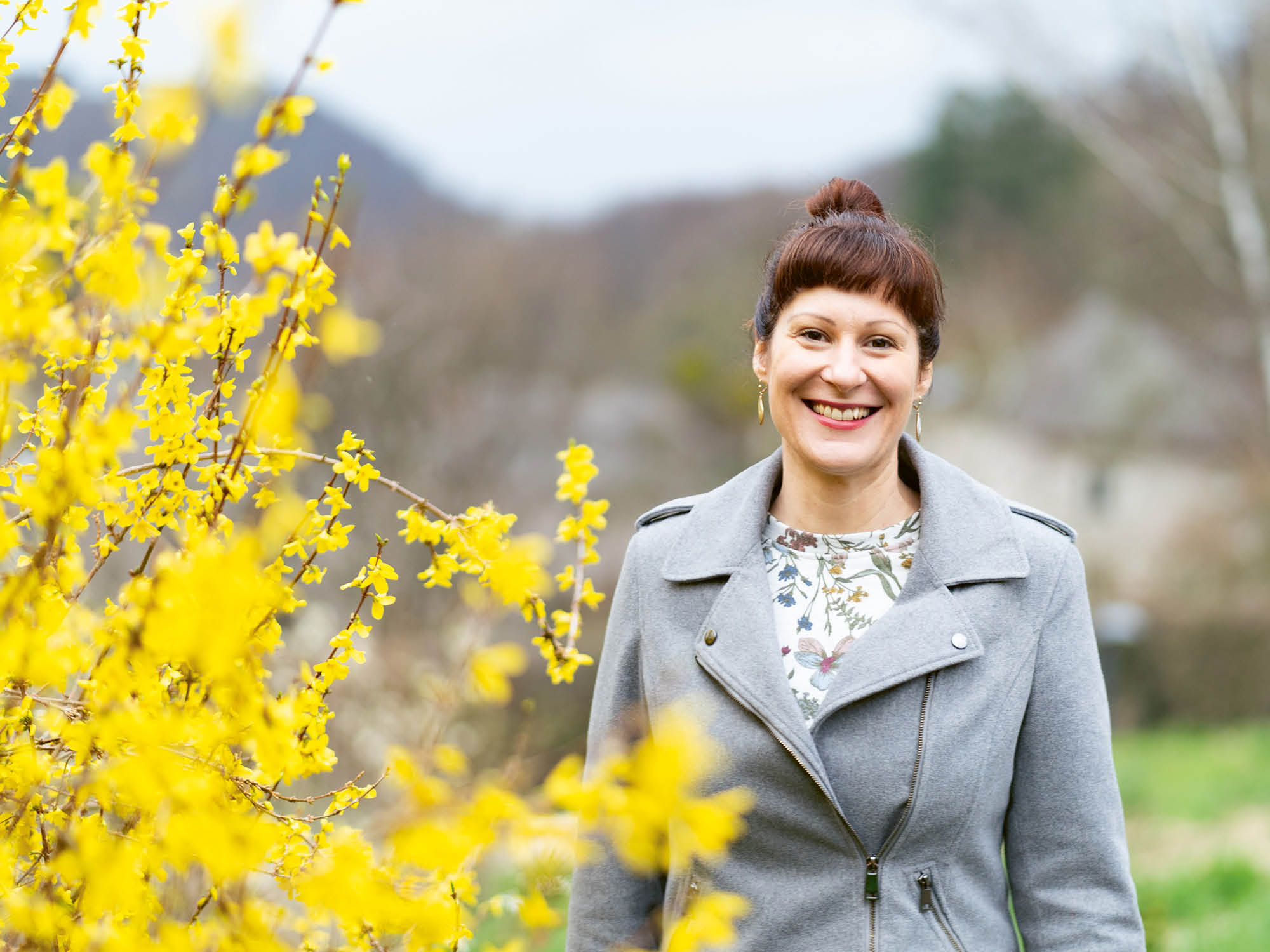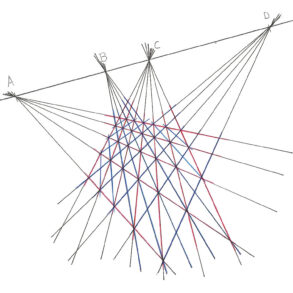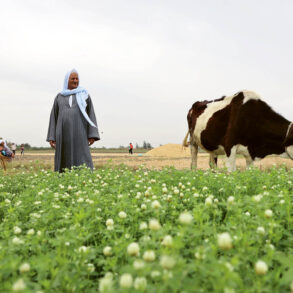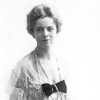Vesna Forštnerič Lesjak has co-led the Natural Science Section of the School of Spiritual Science with Matthias Rang since 2023. We ask where she comes from, where she’s heading, and what she’s all about. The interview was conducted by Philipp Tok.
Earth
A warm-up question: What is your favorite sound?
Vesna My daughter’s laughter. When the two of us are together in the evening, in bed before prayers, we laugh a lot in our own unique, funny way.
My first impression of you was from the presentation you did about a remedy developed using artistic methods. You approached the Lungwort plant [Pulmonaria officinalis] through drawing, sculpting, writing poetry, and making music. I was very touched by the concrete possibility of penetrating something’s effects and essence through art.
As a pharmacist, it is my intention to develop new ideas for remedies from precise observation of natural processes in the plant world. The Goethean path of training enables me to practice the imaginative skills that are necessary to encounter nature in a lively and comprehensible way. The pharmaceutical practices that ultimately connect the processes of nature and disease are then genuinely artistic processes. They are not arbitrary; they are part of “exact imagination.”
What was your path to the Goetheanum like?
Unplanned! Encountering anthroposophy in Slovenia is not easy. When I was a pharmacy student at university, I attended a lecture by an anthroposophical doctor. He spoke about the tendencies of disease in the threefold human organism—a completely new idea for me. His presentation captivated me, and I asked him about research projects for my thesis. He put me in touch with one pharmacist and one biologist who invited me to join their in-service training in Goetheanistic-anthroposophical natural science. The biologist and Goetheanist Jan Albert Rispens opened the door for me. I met Goetheanism before meeting anthroposophy. As a scientist, I was not looking for a new philosophy but an extension of the conventional science that had drained and exhausted me mentally and spiritually during my studies.
The cyclamen plant [Cyclamen purpurascens] became the focus of my research project. I quickly mastered the “new” method as if I’d had it inside me for a long time. My first remedy for manic-depressive moods (bipolar disorder), developed from cyclamen, was created. I also began a training in anthroposophic pharmacy and pharmacology in Germany and became a mentor in Goetheanist training myself. My first students came from Croatia and Slovenia. At the same time, I started working with medicinal plants on our family farm and founded an association for further education in natural sciences, anthroposophic pharmacy, and biodynamic agriculture, Sapientia, on the farm. I gave radio and TV talks about medicinal plants and invited doctors to give lectures. We studied anthroposophy, set up reading groups, and made biodynamic preparations. My family joined me in everything. It was an explosive time of development in my life.
Everything I learned abroad and through my own studies was a gift, and I felt a responsibility to pass it on straight away. I took over the family farm and got it Demeter-certified, set up production facilities, and developed my own recipes for food supplements, cosmetics, and preparations. And I continued to work with the students. We completed great research projects together and met annually in Dornach with other mentors and students. I was valued as a mentor here, but I never dreamed that I would one day work in the Glashaus myself.

How did you get asked to join the Goetheanum?
The School was looking for a new leader for the Natural Science Section—someone who could cover many areas. They asked me, perhaps in part because I’m someone younger, a woman, and from abroad. My connection to the Medical Section and my work as a farmer were important. This was seen as an enrichment for the Section—we see our work as a basis for other sections. We want to develop new skills and abilities, enrich science through art, and use it for other fields—in my case, medicine, but also for agriculture, social life, and education. I was shocked when they asked me—it was right in the middle of the Corona period. Fortunately, my predecessor, Johannes Wirz, said he would stay on for another year, and I already had a good connection with the Glashaus, so I was able to prepare myself well.
And what did you bring of yourself?
I already had (too) many initiatives at home in Slovenia, and I had no ambitions beyond that. But I still felt that I could contribute something new with my potential. How far that goes remains to be seen—there are many expectations. My husband said that just staying in Slovenia wasn’t enough for me. To move things forward there, I need to learn more. As a section leader here, I am constantly learning. Enthusiasm, initiative, creativity, joy, and openness in social encounters are things I bring with me. And I am a fast person—I usually implement my ideas very quickly.
After a year, what are your impressions compared to your expectations?
Wonderful—it couldn’t be better! I’m actually amazed that I hear so much criticism here. Many people live out of old images and traumatic experiences with the Goetheanum. I don’t have that history. I think the combination of the School and the Goetheanum leadership is wonderful. I feel part of this spiritual family—we understand each other very well, listen to each other, and respect each other. We work together effectively, fruitfully, and collegially; we’re on the same level and have similar inner images for the future. I am very satisfied.
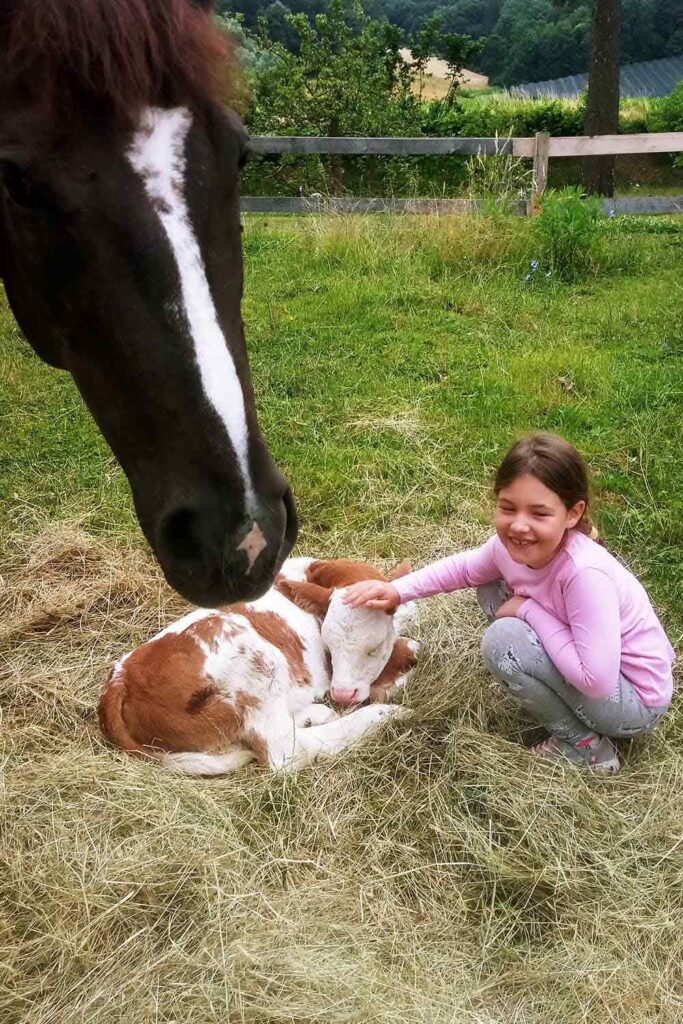
Planets
You grew up both in the city and in the countryside. What is the first plant you remember?
At university, we studied tannins in oak bark and had to memorize all their chemical formulas. I knew how to draw the various structures, but then I thought: what does oak actually look like? I had no idea! I went for a walk and came across an oak tree. I looked at it consciously for the first time—it was my first real encounter with the plant world on this level. As a child, I was constantly out in nature with a friend, and we experimented—for example, putting chicken’s eyes in jars, adding various substances (salt, vinegar, etc.), and observing the changes. I completely lost that connection through education at school. When I encountered the oak tree, it was a powerful awakening, like a kind of initiation. I realized that I wanted to take a different path. Knowing the formulas didn’t help me—I felt so disconnected from the world. Then Goetheanism came to save me!
What kind of world did you grow up in?
Yugoslavia still existed when I was born. When I was five years old, the war started, but Slovenia got out after a few days. My mother is an enthusiastic midwife and my father worked at the train station. We lived in a very small town with a lot of history—the oldest town in Slovenia, half an hour from Steiner’s birthplace. My childhood was quiet, and I could play a lot. At school, I excelled in everything—I was far too much of a perfectionist. It was only at the end of secondary school that I had a real crisis. During my studies, I started searching within. I got active in an “Association for a Better World,” where we talked about life and tried to live with virtue. I traveled a lot, to India and Kenya, for humanitarian and medical activities. I read many great books from different philosophies of the world. My favorite was the Bhagavad Gita. I fell in love with anthroposophy because the concept of freedom is at the center—I didn’t find that in any other philosophy.
What about freedom inspired you?
That we human beings can develop ourselves further. Being able to develop our own insights and abilities—the creativity of anthroposophy, when it is based on Goetheanism—is what Steiner also intended, so that anthroposophy does not remain dogmatic but is always capable of development, alive and organismal. I haven’t found that anywhere else. Every human being can be this way—it is up to us to deal creatively with nature and culture. Responsibility for the world can only be born out of freedom. That is why I immediately pass on a lot of what I learn. More freedom also means more tasks, which in turn means more responsibility but also more ability to carry them.
You experienced the upheaval of the 90s when you were a child—and the attitude that anything is possible, that a better world can come. Does that resonate?
Yes and no. Yugoslavia was different from Germany. Many older people from my country miss the socialist conditions. For them, that was freedom. There was almost no unemployment, no hunger, everything was communal, there weren’t too many differences between people, and not too much consumption but lots of free time. Roads, hospitals—everything was built together, and there was always a party in the evening. For many, those were the best times. I have only good memories from my childhood—I didn’t experience the dark side. I take this mood of community building with me as a good thing and try to strengthen it here. In our circles, as researchers, we often become very absorbed and lonely. Building community is not easy in the natural sciences. I try to connect people—it’s a good legacy from my childhood.
How do you tackle community building?
I meet so many people here who are traumatized by the past. They are amazed that I am speaking to them. Some are now coming to our events. I try to make everyone feel welcome and welcome to express how they feel about things so that we learn from each other. Everyone has something to learn because everyone has also experienced separation. I try to move us into the future together—it’s not always easy, but even a single conversation can go a long way. However, I also remain honest, clear, and sometimes rather firm if the situation requires it. People usually appreciate that because it’s well-intentioned. At the Section, we have been organizing a meditation weekend for a few years now, which we will now hold annually. Last year, we changed the format. We gave it a title and a description and asked for contributions to the theme. We used to choose who we would invite, but this time, we took everyone who wanted to contribute. No costs and no entry fee, just a request for donations. We ran parallel workshops, and everyone was free to choose what to attend. This really created a sense of community—everyone could come and contribute. In the end, it was positive on all levels. It’s always case-specific how you can promote community building in a given situation.
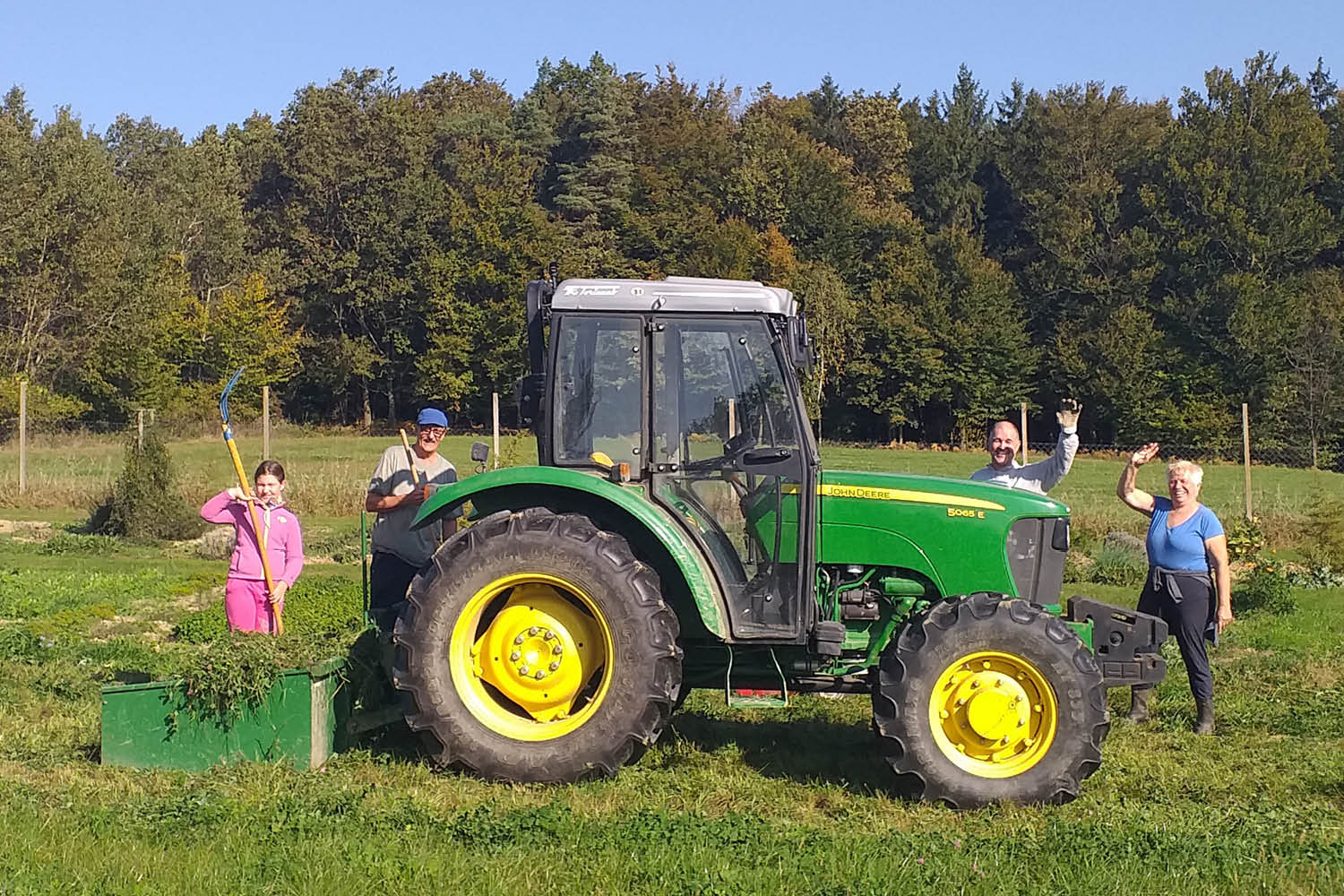
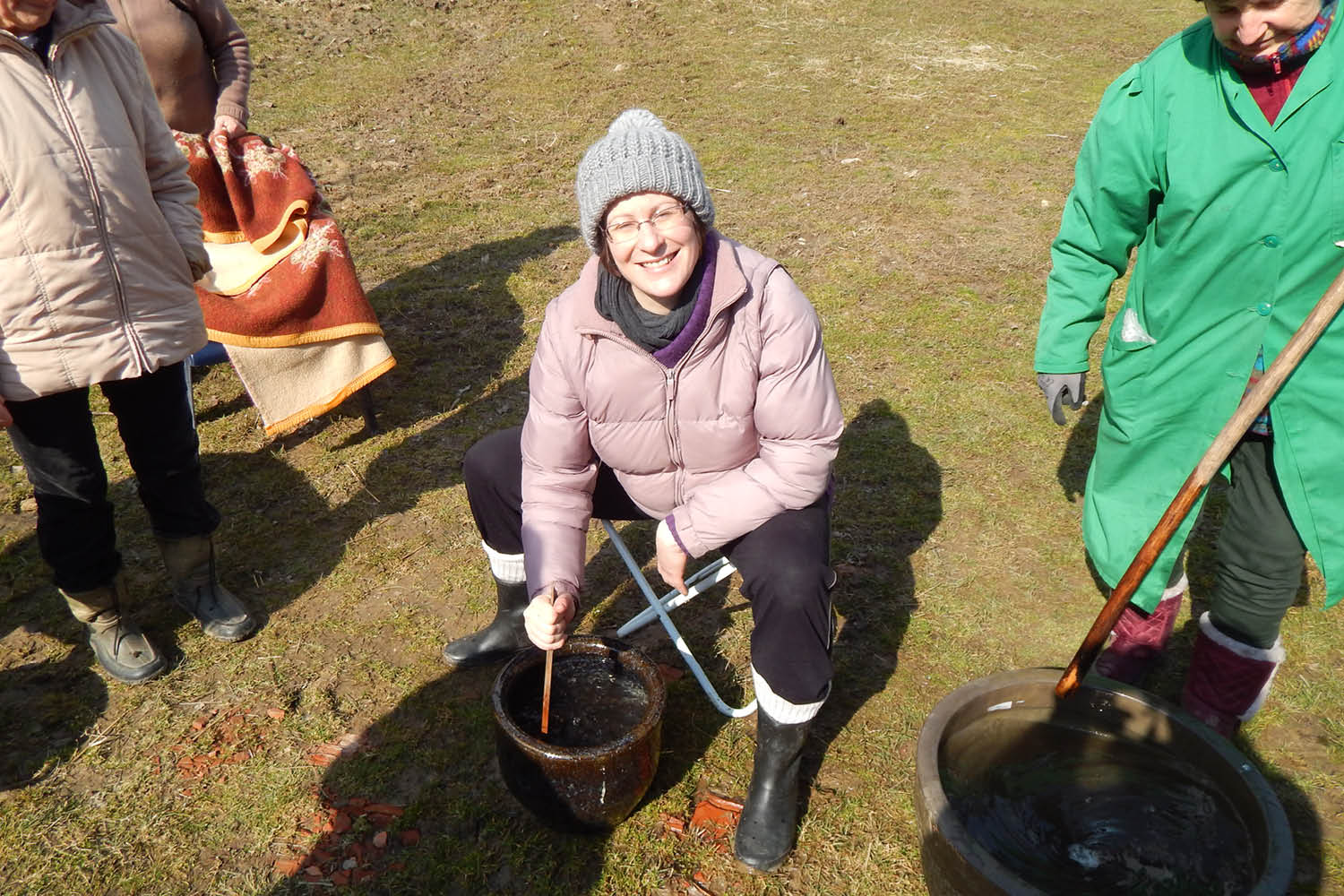
Left: Vesna’s family at work on the farm. From left to right: her daughter Iris, her father Danijel, her husband Edvard, and her mother Angela. Photo: Vesna Forštnerič Lesjak.
Right: Vesna stirring the valerian preparation for the compost pile during pregnancy, with the members of her Sapientia association. One month later, her daughter Iris was born on Easter Sunday. Photo: Edvard Lesjak
Stars
What is the meaning of the Earth for you? What are you here for?
We humans are meant to be on Earth by God’s will, to do our work here in an honorable way, to serve the world, to care for it, and to develop it further. I see living thinking and organic design as one way of doing this. This promotes life on Earth, human life, and our own biography. If we only think in dead, abstract ways, it brings death to the Earth. But every person has within them a desire to heal the Earth, to contribute as an individual with all their abilities. This could give us a completely different kind of medicine, agriculture, and social life. Living thinking teaches important skills, even for social organization. I want to promote that. My experience is that many anthroposophists don’t really value Goetheanism. There needs to be much more of a synthesis with anthroposophy—recognizing Goetheanism as its basis and practicing it. You have to practice it.
The significance of the Earth is to develop it further, not just to preserve creation but to make more of it. Your keyword is “Goetheanism.” What do you mean by that?
Goetheanism is a path that connects people and nature. Step by step, we become one with the world, expanding beyond our boundaries with our knowledge. A bridge is created between the subject and the object of observation. Self-knowledge becomes knowledge of the world. It is a deeply esoteric path that can find full realization in professional life. The Rosicrucian ideals can be fully realized through Goetheanism at this time. There is still so much potential in it. Steiner said that Goetheanism is still in the grave and must be resurrected. If this takes place as a cultural impulse, it will lead directly to a new understanding of the Mystery of Golgotha.
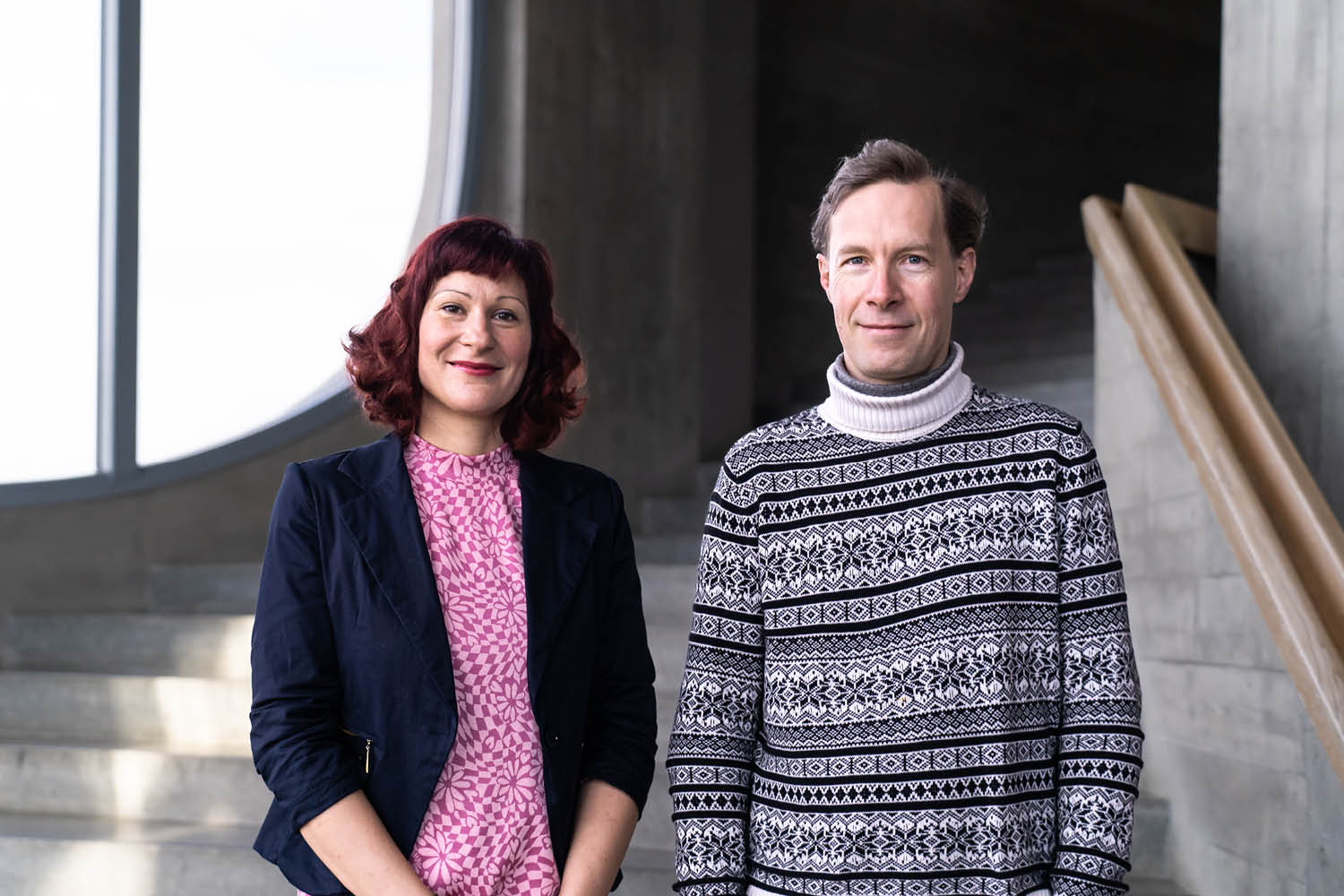
What are your plans for the section—where do you want to take it? What would be the best possible outcome of your work?
We want to bring people together so that we strengthen each other. I prefer to work with the younger generation, i.e. the students, so that our work reaches the next generation and reaches new countries, so that it becomes global, a global impulse. The younger generation and their education are very important to me but so is community building. I love the picture-forming methods we use in Goetheanism—I am very connected to the rising picture methods where we can accompany natural processes and say something scientifically about qualities. This is important for medicine and agriculture because our medicines are valued for their quality. We have access to investigations of qualities—my contribution is an attempt to scientifically justify why they are legitimate. And I would like to develop more remedies. I just published a book about Wild Teasel as a new remedy for Lyme disease—the culmination of a very successful nine-year project, completed with one of my students. I want to use impulses like this to contribute to university content: how can we unify natural science and spirituality, the esoteric side of natural science? There are great challenges here, and we scientists have a strong approach to this, but perhaps we haven’t been able to express how to nourish the spiritual side through science yet.
So many tasks! We have a small team at the Section: just two co-leaders at 50 percent and a full-time assistant. Four other colleagues work here on projects funded by external grants, and two emeritus section leaders continue to help us on a voluntary basis. At the same time, we are trying to involve new co-workers with projects. The expectations and needs in the world are so high that it is very difficult. I am grateful for my colleague Matthias Rang—we are very different, but we think similarly about the future and understand each other very well.
What kind of support would you like? Who would you like to work with? Who would you like to hear knocking on your door?
I had a dream after I arrived here: a pair of young PhD students in biochemistry knocked at the Glashaus door. They said they wanted to live like me, to take a different path with their profession, and they asked how to do it. They told me how strongly they felt this need, and they cried. I said I couldn’t give them a job, but I could tell them how I got here so that they might find their way. That is the pain of it—that we have not managed to bring Goetheanism into the world in a way that people can work with it professionally. We have wonderful academics who might do something at a university but otherwise can’t make a living from it. They are not yet able to find a proper place in the world with Goetheanism. It’s a major challenge for the future.
A lack of research institutes and communities? A lack of job profiles and business models? The competition is a complex scientific world that has a lot of funding and important interests to back it. How can another scientific world be established alongside it, what does it need?
Scientists lead the world, and they have a lot of influence. Many of my colleagues in pharmacy have to work with conventional methods. They often really dislike it and want to do something else, and they often come to my lectures. It’s painful that there are so few alternatives available. We have to create them in the future. Whenever I come to Dornach (I commute to maintain a balance between family and work), I look at the Goetheanum and experience it as a great gift. For me, it has always been a place for learning and research, for hope, and for encounters. I hope that we really appreciate this as people and as members, and that we manage to move away from criticism and work together constructively. That’s my wish for the future. And it’s not just the Goetheanum Leadership and the Executive Board that I find so nice, but all the staff. It’s incredible what kind of people we have here. I hope we can realize and be conscious of what we have. It’s so rare in the world, we have to learn to appreciate it. Thank you.
Thank you!
Title image Vesna Forštnerič Lesjak, Photo: Xue Li

